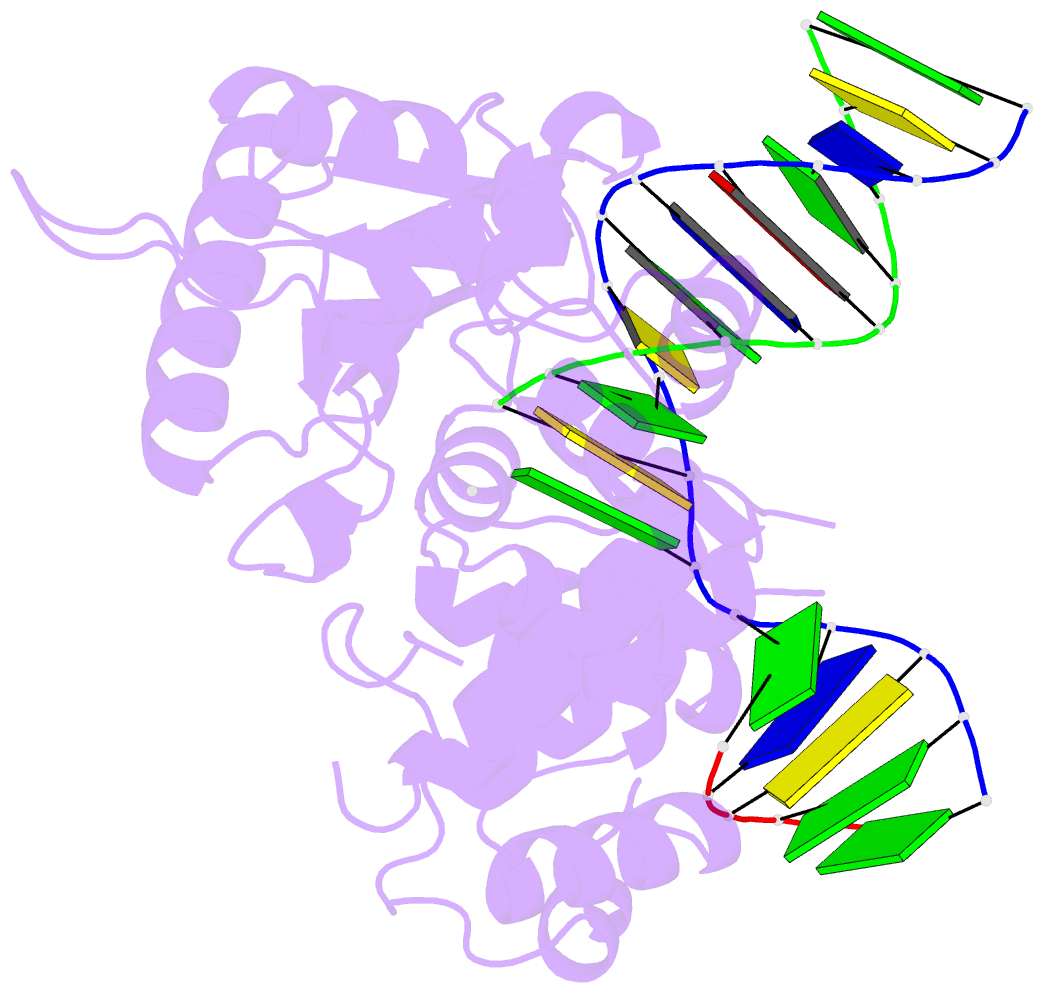Summary information and primary citation
- PDB-id
- 5ugp; SNAP-derived features in text and JSON formats;
DNAproDB
- Class
- transferase-DNA
- Method
- X-ray (1.955 Å)
- Summary
- DNA polymerase beta complex with a 1nt gap and dcmppnp
- Reference
- Shock DD, Freudenthal BD, Beard WA, Wilson SH (2017): "Modulating the DNA polymerase beta reaction equilibrium to dissect the reverse reaction." Nat. Chem. Biol., 13, 1074-1080. doi: 10.1038/nchembio.2450.
- Abstract
- DNA polymerases catalyze efficient and high-fidelity DNA synthesis. While this reaction favors nucleotide incorporation, polymerases also catalyze a reverse reaction, pyrophosphorolysis, that removes the DNA primer terminus and generates deoxynucleoside triphosphates. Because pyrophosphorolysis can influence polymerase fidelity and sensitivity to chain-terminating nucleosides, we analyzed pyrophosphorolysis with human DNA polymerase β and found the reaction to be inefficient. The lack of a thio-elemental effect indicated that this reaction was limited by a nonchemical step. Use of a pyrophosphate analog, in which the bridging oxygen is replaced with an imido group (PNP), increased the rate of the reverse reaction and displayed a large thio-elemental effect, indicating that chemistry was now rate determining. Time-lapse crystallography with PNP captured structures consistent with a chemical equilibrium favoring the reverse reaction. These results highlight the importance of the bridging atom between the β- and γ-phosphates of the incoming nucleotide in reaction chemistry, enzyme conformational changes, and overall reaction equilibrium.





